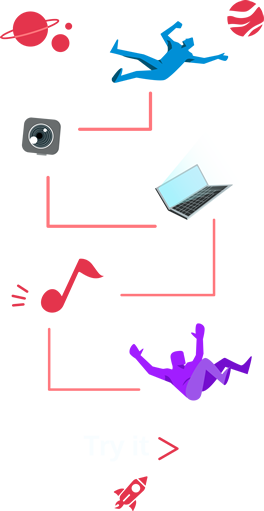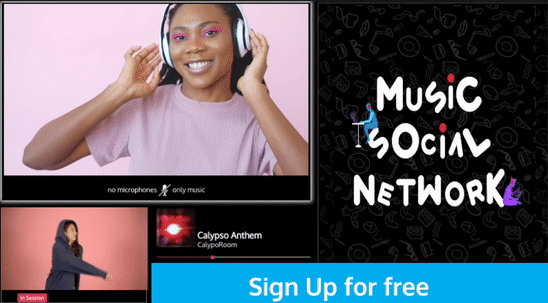What is burlesque dancing? Meaning, brief history, and best dancers ever
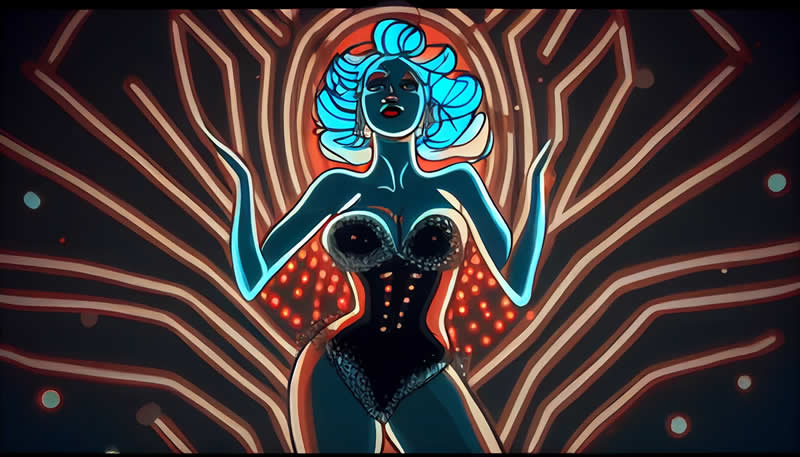
This post contains affiliate links. If you use these links to buy something we may earn a commission. Thanks.
Table of content
What is burlesque dancing? Meaning, brief history, and best dancers ever - Introduction
Over the past ten years, burlesque dance has grown in popularity thanks to its originality and boldness.
We'll now break down this distinctive form of dance for you. Let’s start.
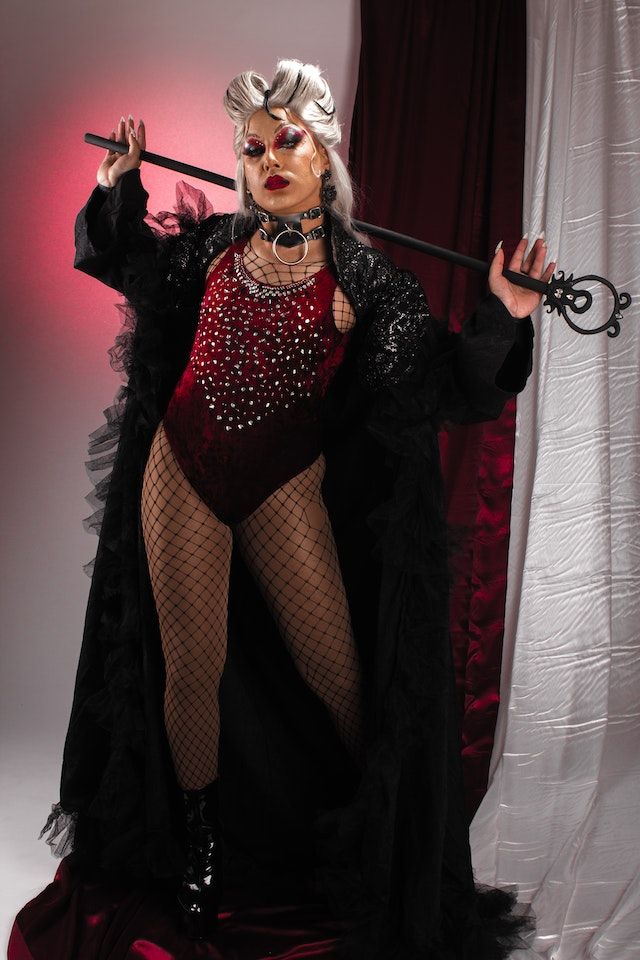
KEY TAKEAWAYS
Understanding Burlesque Meaning: Burlesque is far more than just a dance or provocative spectacle; it's an art form rooted in satire and theatrical performance. Understanding its nuanced history helps deepen appreciation and separates it from common misconceptions about it being merely striptease.
Iconic Performers: The article highlights the influence of legends like Dita Von Teese and Josephine Baker, who have shaped burlesque into what it is today. These performers are not just dancers but artists who imbue their work with narrative, style, and often a strong social message.
Benefits of Engaging with Burlesque: From fitness to psychological wellness, engaging in burlesque offers a variety of benefits. It is a body-positive and inclusive activity that can improve both mental and physical health, making it accessible to everyone.
Evolution of Burlesque: Over the years, burlesque has evolved from a satire-based performance in the late 1800s to a multidimensional, empowering art form. The influence of musical theater, socio-political settings, and individual artists have kept it adaptive and fresh.
CalypsoRoom: A New Way to Experience Music: While the article focuses on the realm of burlesque, CalypsoRoom offers a platform for experiencing music in a broader sense. By connecting people through webcams for shared musical experiences, it enriches the way we interact with and appreciate various art forms, including the musical elements inherent in burlesque.
What is burlesque
Burlesque is a style of dancing that uses theatrical aspects to give the artists on stage more force.
Many people who haven't attended a burlesque show mistakenly believe it to be a spectacle with female strippers dancing.
Burlesque, however, is more of a provocative musical act or cabaret-style variety show.
It leaves more to the imagination than stripping does. This is because the actors who perform on stage are never entirely naked.
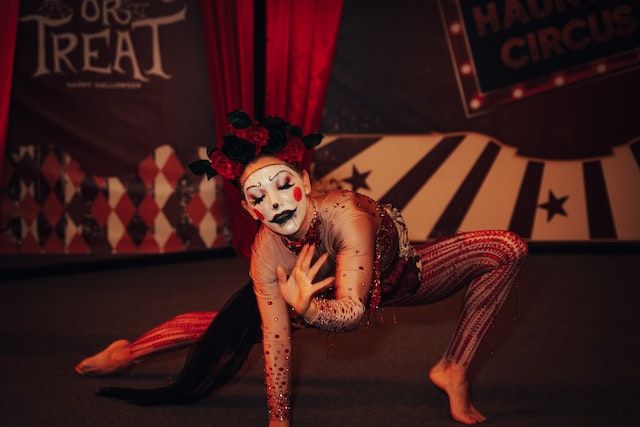
Burlesque meaning
The Italian word "burla" is the root of the word "burlesque." Burla means humor or joke in Italian, hence this dance style's comical character.
Because it mocks its themes by humorously portraying them, it belongs to the literary genre of satire.
The American burlesque act is what results from fusing the word's literary connotation with the sensuality and empowerment of dance.
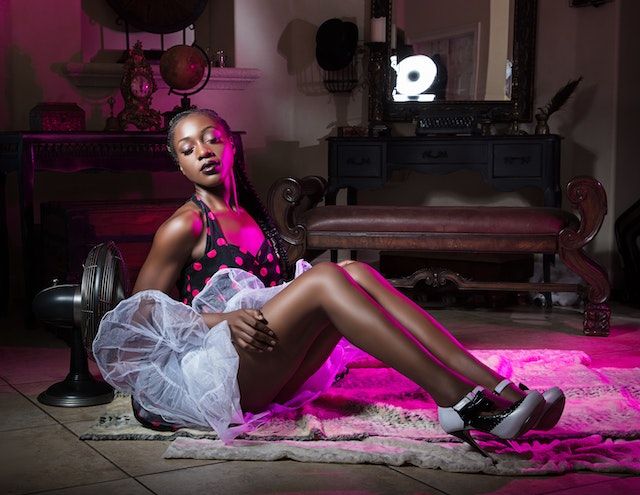
In the late 1800s, American burlesque first appeared on the scene. It was once perceived as a variety program with perfectly shaped, ill-dressed ladies.
Because they would mock upper-class social customs, these ladies were seen as brave.
As a result, during the 1920s and 1930s, it began to resemble what we would see at a modern-day concert, which includes satire, singing, and dancing.
This aggressive and comic dance started to decline after the 1940s arrived. The United States had just emerged from the Great Depression when it joined World War II.
It goes without saying that folks weren't thinking about parodic cabaret acts.
The movie featured Cher and Christina Aguilera, two well-known singers and performers.
The roles they took on provided a realistic picture of what burlesque dance is today: a fun, powerful outlet for female entertainment.
Famous burlesque dancers
Dita Von Teese
Dita Von Teese has had such an impact that many people refer to her as the "Queen of Burlesque”.
Dita initially intended to train as a classical ballerina. But when she went to a strip club for the first time at age 19, she was "blown away" by how unoriginal the routines were.
Dita Von Teese rose to prominence as a burlesque legend. When Dita reaches the stage, her vintage outfits and distinctively painted eyes further captivate the crowd.
Josephine Baker
Josephine Baker must be the most prominent of the several burlesque luminaries from the 1920s whose names are recorded in history.
The majority of Josephine's works focused on France and its capital, Paris, despite the fact that she was born in America but subsequently moved there and "fell in love" with the country.
Josephine's shows at the prestigious Paris cabaret venue Folies Bergère were frequently sold out.
Josephine's outfit, which consisted of a short skirt fashioned of fake bananas and jewelry, became synonymous with the Jazz Age and the 1920s.
Isaiah Esquire
Isaiah, who goes by the nickname "Glamazon," draws attention to himself as soon as he enters the room.
This, together with a unique temperament that is both emotional and vivacious, readily makes him a noteworthy performer in the burlesque scene.
From the US to Finland to Jamaica, Isaiah has performed in venues all around the world.
Jean Idelle
The first black exotic fan dancer was Jean Idelle, also known as "Sepia Sally Rand." At the age of 20, Jean was seen by a Broadway talent agency, which launched her career.
She had some instruction from a fan dance choreographer and demonstrated a special talent for the line of work.
Long before the 1964 Civil Rights Act, Jean's hypnotizing choreography and beautiful feather fans were able to dissolve racial barriers.
Perle Noire
Perle Noire doesn't have a stage persona, unlike other well-known burlesque performers.
According to one interview, she conducts herself outside of the stagelight in much the same manner as she does on it, including how she speaks, behaves, and dresses.
Her vibrant and endearing theatrical character is genuine. Because of this, in addition to being a well-known performer on a global scale, she has had great success mentoring aspiring dancers at her own dance company, the House of Noire.
Experience burlesque virtually with CalypsoRoom
While burlesque has a rich and storied history, it's not confined to physical stages and cabarets anymore.
In our digital age, platforms like CalypsoRoom are revolutionizing the way we experience music and performance arts, including burlesque.
Founded on the principles of social connectivity and shared musical experiences, CalypsoRoom allows users to meet and enjoy music together through webcam-based interactions.
How does CalypsoRoom fit into the burlesque scene?
Given the theatrical and engaging nature of burlesque, it's a genre that lends itself well to intimate settings.
CalypsoRoom can facilitate such experiences by allowing users to host or join 'rooms' dedicated to specific musical genres or performance styles.
This way, performers can reach a global audience without the limitations of geography, and audiences can partake in an immersive, interactive burlesque show from the comfort of their homes.
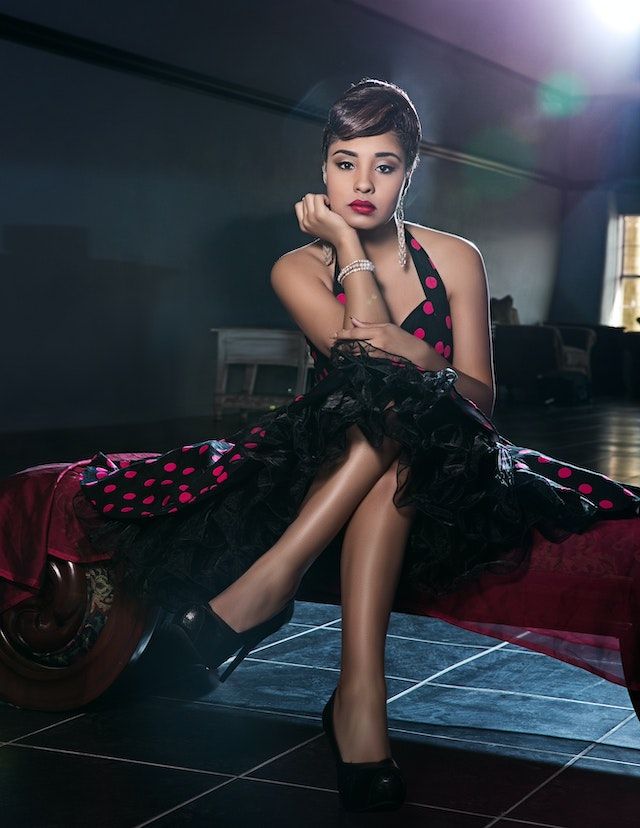
Benefits of burlesque dancing
Is healthy
In contrast to going to the gym, burlesque is a fun and inventive kind of exercise. Burlesque routines necessitate the use of numerous body parts, so learning and practicing one necessitates this.
Dancing in heels may help you develop stronger core muscles throughout your body, develop your calves and legs, and improve your cardiovascular fitness.
You may learn about body respect and self-love in burlesque, which have a lot of positive effects on your general welfare.

You gain confidence
You will gain greater consciousness since burlesque dance emphasizes body positivity and self-love.
Your burlesque dance coach can thus assist you in incorporating this into your routine, which will therefore enable you to express yourself.
You learn new skills
You can learn something enjoyable and novel with a group of like-minded people by signing up for a burlesque class.
Although you might feel apprehensive at first, burlesque dancers are trained professionals who are skilled at encouraging people to accept themselves.
You don't need previous dance experience or any other background to study burlesque. Just a desire to experiment and have fun while doing so.
Is 100% inclusive
Everybody is welcome to participate in burlesque dance, regardless of size, shape, or gender.
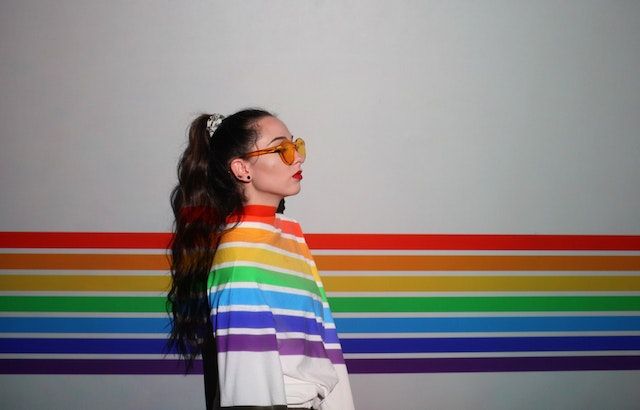
Burlesque is also a great way to practice self-love and appreciate your body and all that it is capable of.
The main theme of burlesque is to embrace your body, regardless of how it looks. Consequently, loving your body will be a major focus of a burlesque lesson.
1920s-Inspired attire and accessories for the modern burlesque performer
Capture the essence of the Roaring Twenties with the BABEYOND Women's Flapper Dress, a dazzling piece that embodies the spirit and glamour of the 1920s Gatsby era.
Perfect for burlesque performances, themed parties, or any event where you want to make a grand entrance.
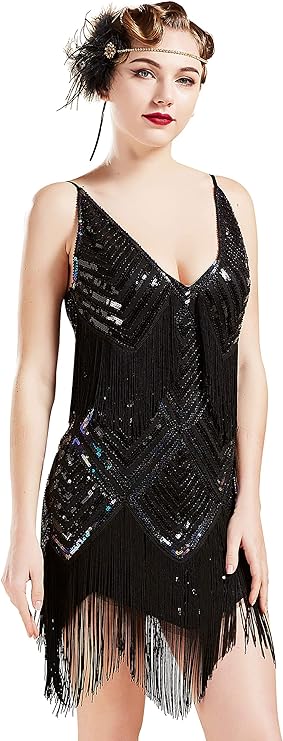
Steal the spotlight in the PORRCEY Women's Sequin Dress , a masterpiece that combines the dazzle of diamonds with the sensual sway of tassels.
This dress is a tribute to the opulence of the 1920s, making it perfect for burlesque performances that demand both glamour and movement.
Add this stunning piece to your wardrobe for an unforgettable entrance that blurs the line between vintage charm and modern allure.
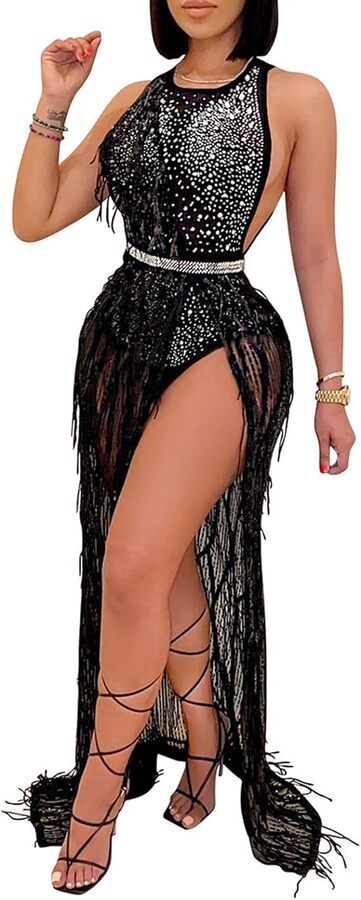
Immerse yourself in the allure of the 1920s with the Tisancy 1920s Flapper Accessories Set, an all-inclusive kit designed to complete your burlesque or Gatsby-themed ensemble.
With items ranging from headwear to jewelry, this set ensures you have every accessory needed to embody the elegance and charm of the era.
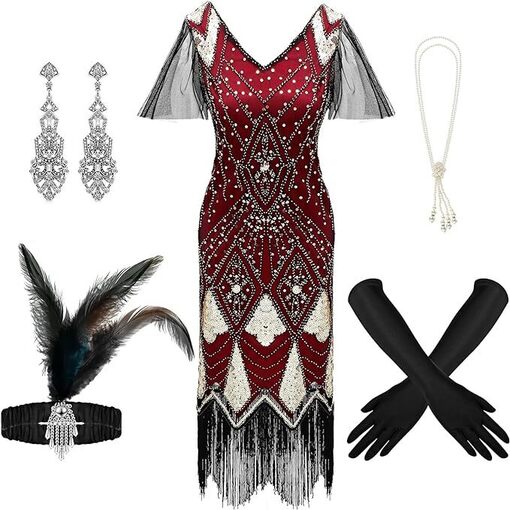
Accentuate your 1920s inspired look with the SWEETV 1920s Flapper Headpiece, an exquisite accessory that encapsulates the glamour and spirit of the Roaring Twenties.
This headband, adorned in black and gold, is the perfect finishing touch to any burlesque or Gatsby-themed attire, ensuring you stand out with elegance and grace.
Add this timeless piece to your collection, and embody the sophistication and allure of an era celebrated for its revolutionary fashion and zest for life.
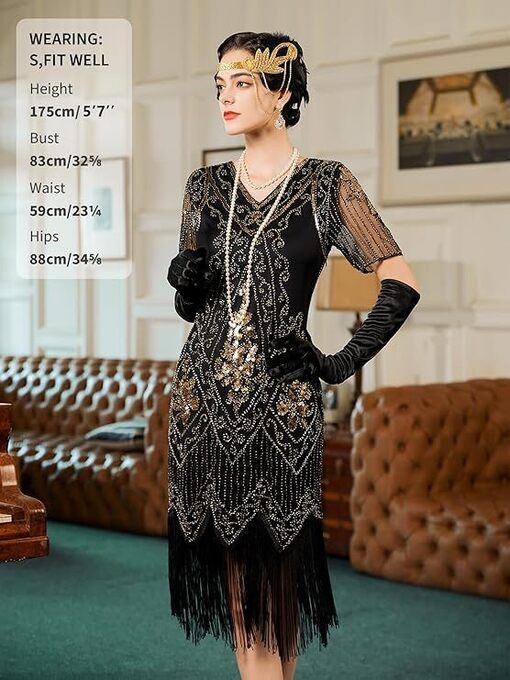
A journey through the history and fashion of burlesque
Delve into the captivating world of burlesque with 'Burlesque: A Living History' by Jane Briggeman.
This book offers readers an unprecedented glimpse into the vibrant past and resilient spirit of burlesque, from its golden age to the present day.
Perfect for enthusiasts and historians alike, this tome is a must-have for anyone fascinated by the art of performance, providing insight and inspiration drawn from the legends themselves.
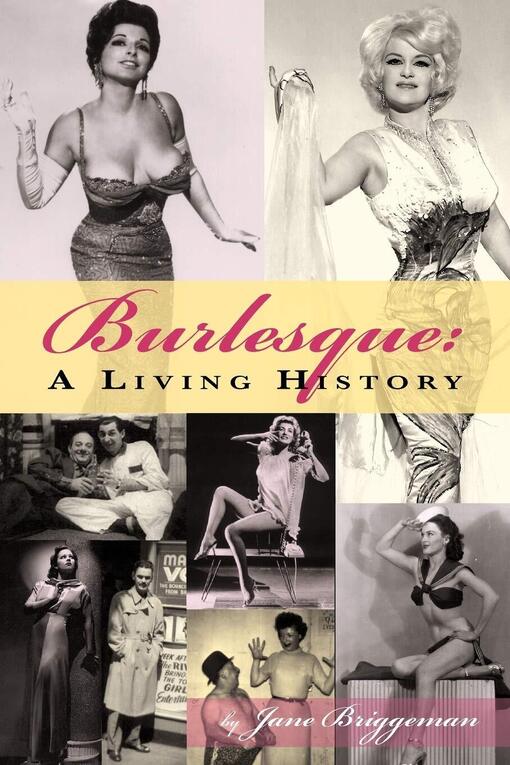
Immerse yourself in the dazzling world of burlesque with 'The Queens of Burlesque: Vintage Photographs from the 1940s and 1950s' (Schiffer Pictorial Essay).
This exquisite collection showcases the glamour and artistry of burlesque's heyday, featuring iconic performers who defined an era.
A treasure trove for fans of vintage photography and performance art, this book offers a rare glimpse into the seductive and entertaining spectacle of historic burlesque.

Explore the rich tapestry of burlesque through the ages with 'Behind the Burly Q: The Story of Burlesque in America' by Leslie Zemeckis.
This compelling read offers an in-depth look into the history and evolution of burlesque, featuring interviews with the performers who lived it.
Delve into the captivating world of burlesque and uncover the stories that made it an iconic part of American entertainment history.
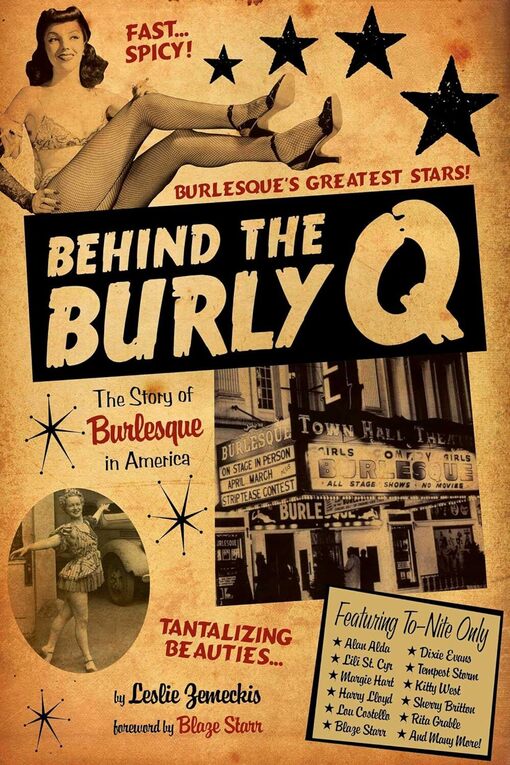
Dive into the vibrant world of burlesque fashion with 'Costumes for the Stage: A Complete Handbook for Every Kind of Play' by Coleen Scott.
This comprehensive guide not only explores the evolution of burlesque costumes from 1866 to 2018 but also serves as an invaluable resource for anyone interested in the design and creation of theatrical costumes.
Whether you're a costume designer, performer, or simply a lover of burlesque and theater, this book offers a wealth of information and inspiration.
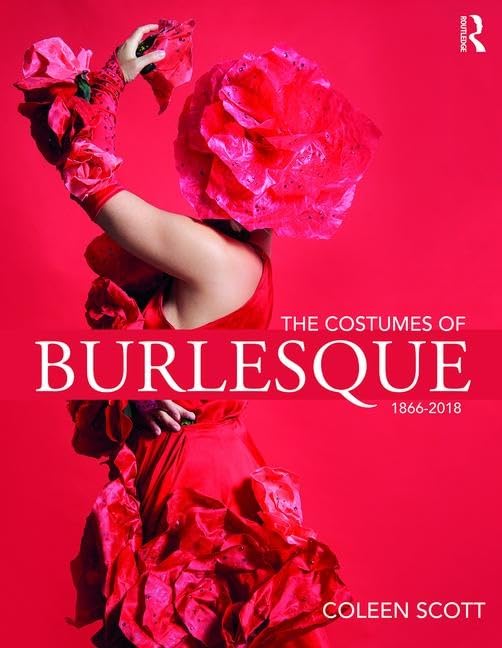
What is burlesque dancing - Conclusion
Understanding the nuances and meaning behind burlesque adds layers to our appreciation of this expressive art form.
While its history is deeply rooted in theatre and satire, the future of burlesque is unfolding in exciting digital realms.
This is where CalypsoRoom comes in, offering a unique platform for both performers and audiences to connect, engage, and deepen their experience of the art form.
If you're intrigued by burlesque and wish to experience it in a new, interactive way, we invite you to visit and join the CalypsoRoom community.
There, you'll find a blend of tradition and innovation, all in a space that celebrates the essence of music.
Thanks for reading,
The CalypsoRoom Team
Frequently Asked Questions (FAQs)
What are the origins of burlesque dancing?
Burlesque dancing originated in the late 1800s in America as a variety show that often satirized social norms and upper-class customs. It has roots in theatrical satire, stemming from the Italian word "burla," which means humor or joke.
Is burlesque dancing the same as striptease?
No, burlesque dancing is not the same as striptease. While both may include elements of undressing, burlesque focuses more on storytelling, satire, and theatrical performance, often leaving more to the imagination.
What elements are typically involved in a burlesque performance?
A typical burlesque performance incorporates elements of dance, theater, and satire. Performers often use elaborate costumes, props, and even comedy to engage the audience and tell a story.
How has modern burlesque evolved from traditional forms?
Modern burlesque has incorporated more elements of musical theater and focuses increasingly on empowerment and self-expression. It continues to evolve as a diverse, inclusive art form that pushes social and artistic boundaries.
What are the notable figures in the world of burlesque dancing?
Some of the notable figures in the world of burlesque include Dita Von Teese, Josephine Baker, and Isaiah Esquire. These artists have contributed to shaping burlesque into an expressive and empowering art form.
Is burlesque dancing empowering for women?
Yes, burlesque dancing is often cited as an empowering art form for women. It emphasizes body positivity and self-expression, allowing performers to reclaim and celebrate their own sensuality.
Can men participate in burlesque?
Absolutely, men can and do participate in burlesque. The art form is inclusive and open to performers of all genders, sizes, and shapes.
back
Written by CalypsoRoom Editorial Team
The CalypsoRoom Editorial Team is a skilled and diverse group of writers, researchers, and industry specialists who have access to Calypso's data and information in order to give you broad knowledge about the music industry as well as helpful advice to help you manage your music and dancing career.
Updated September 2023
Company number: 681223
James's Walk 31, Dublin, Ireland
contact@calypsoroom.com
+353 (89) 435 8928

